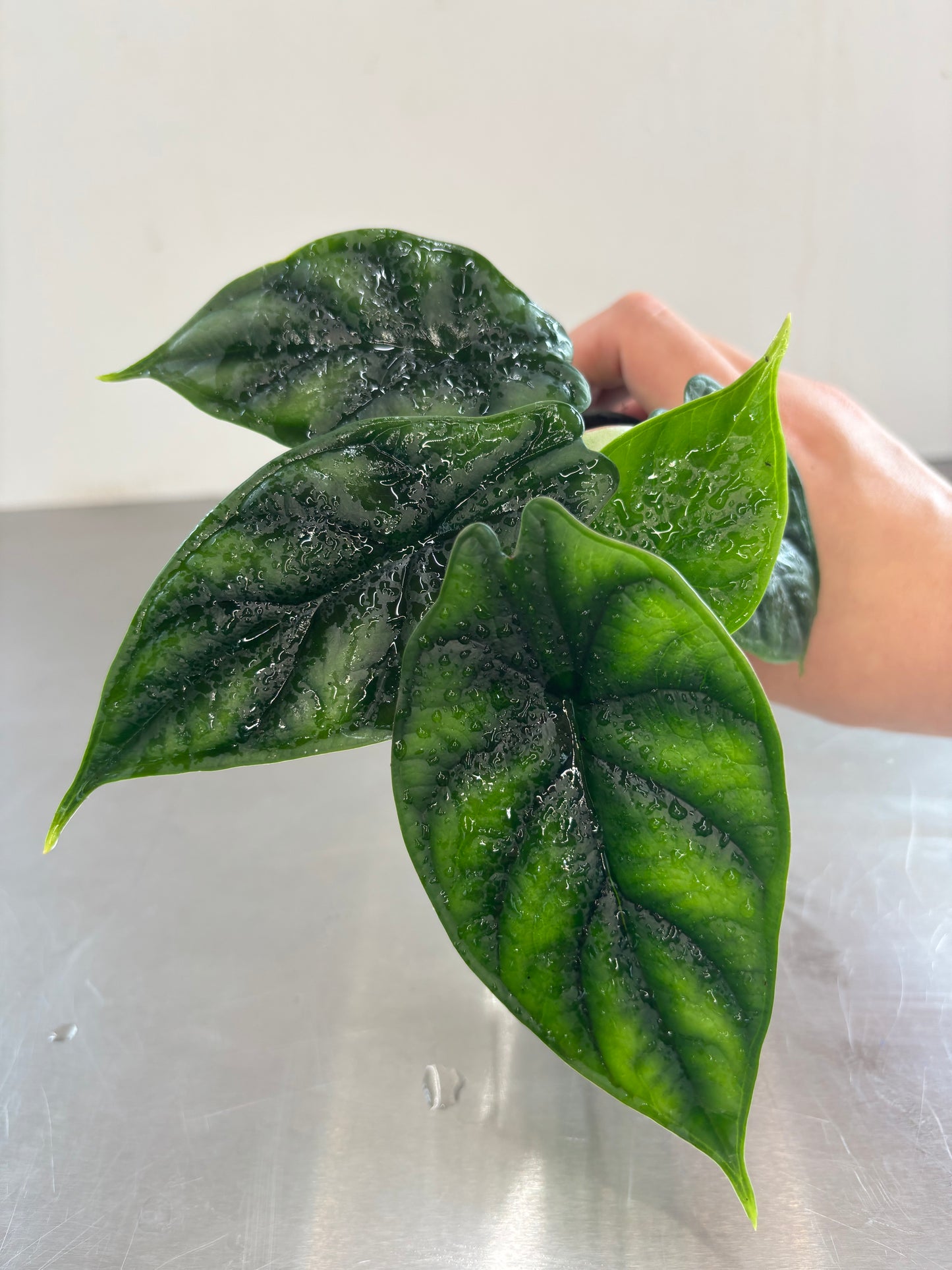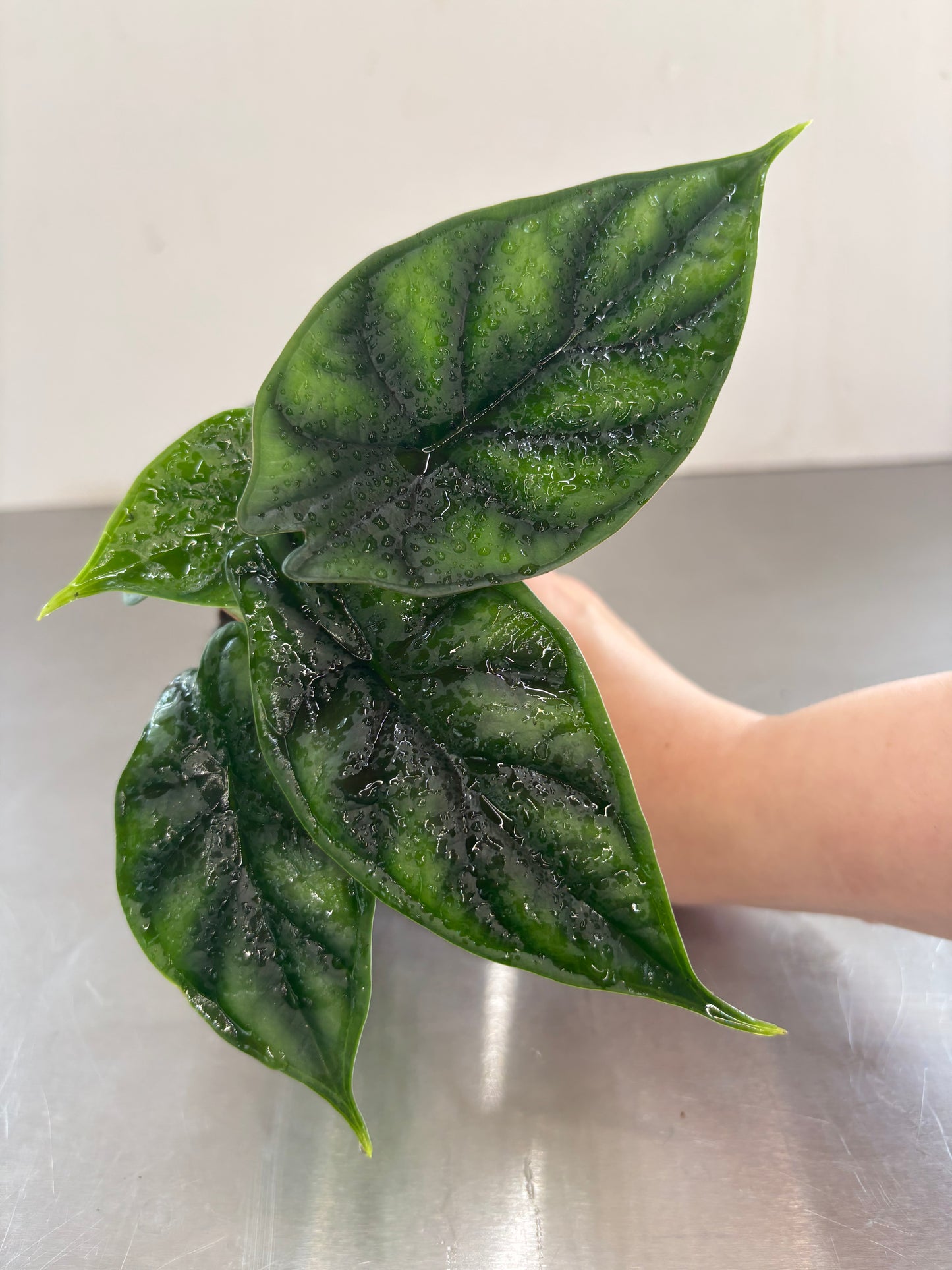- Home
- >
- Plants and products under 100 SEK
- >
- Alocasia baginda 'Dragon Scale'
Plantthatplant
Alocasia baginda 'Dragon Scale'
Alocasia baginda 'Dragon Scale'
Couldn't load pickup availability
About
About
Light
Bright, indirect light is ideal. Too little light can cause the silver splash pattern to fade, while too much direct sun can burn the leaves. A grow light can also work well if natural light is limited.
Watering
Allow the top half of the soil to dry out between waterings. Like most Hoyas, it prefers slightly drier conditions and is sensitive to overwatering. In winter, reduce watering frequency.
Temperature & Humidity
Prefers warm temperatures between 18–27°C (65–80°F). It thrives in moderate to high humidity but can adapt to average indoor levels. Extra humidity can encourage flowering and healthier foliage.
Soil
Use a well-draining, lightweight mix—ideally a combination of orchid bark, perlite, and coco coir or peat. Avoid dense soils that retain water.
Fertilizing
Feed monthly during the growing season (spring and summer) with a balanced, diluted liquid fertilizer. Pause feeding during fall and winter.
Pruning & Maintenance
Minimal pruning needed—trim back leggy growth if desired. Don’t cut off the flowering spurs (peduncles), as Hoyas often re-bloom from the same spot.
Pests
Generally pest-resistant but keep an eye out for mealybugs and spider mites. Wipe leaves regularly and inspect new growth for signs of infestation.
Specification
Specification
15 cm high
Care guide
Care guide
Light
Prefers bright, indirect light. Avoid direct sun, which can scorch its sensitive leaves. Too little light may result in leggy growth and loss of color intensity.
Watering
Keep the soil evenly moist but not soggy. Let the top few centimeters of the soil dry out between waterings. Overwatering or poor drainage can lead to root rot.
Temperature & Humidity
Thrives in warm temperatures between 20–28°C (68–82°F). It needs high humidity (60% or more) to thrive—dry air can cause leaf edges to brown. Use a humidifier or pebble tray if needed.
Soil
Use a loose, well-draining potting mix. A blend of peat or coco coir, perlite, and orchid bark works well to support the roots and retain just the right amount of moisture.
Fertilizing
Feed every 4–6 weeks during spring and summer with a balanced, diluted liquid fertilizer. Avoid overfeeding, and pause during fall and winter when growth slows.
Pruning & Maintenance
Remove yellowing or damaged leaves at the base. This variety can go dormant in cooler months—reduce watering if growth stops and resume normal care when it starts up again.
Pests
Watch for spider mites, mealybugs, and fungus gnats. Keep humidity high and leaves clean to reduce pest risk.
Share




